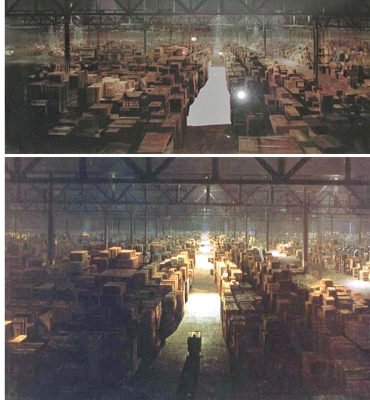
Any scenery, from the skyline of ancient Rome to an alien landscape, can be added to a film background by a matte painting – a technique used to mask part of a scene which will be added later. The technique evolved from glass painting, invented in the 1930s.
A scene was painted on a sheet of glass, placed in front of the camera so that it merged with the action being filmed. Later silent-film makers developed ‘in-the-camera’ matte. It involved shooting live action with part of the scene ‘matted out’ by black paint on a glass sheet in front of the camera.
The partially exposed film was rewound and transferred to another camera.
A frame of the film was projected onto an easel and an artist added what was required to the matted-out area, leaving the live action area black.
The two segments – painted scenery and live action – were then combined, using a special ‘optical printer’, invented by a Hollywood technician, Limewood Dunn, around 1930. A type of film copying machine capable of superimposing and blending different portions of film, it can create a variety of effects. They include dissolves (in which one scene seems to ‘melt’ or fade into another), wipes (a shot which sweeps off the screen to be simultaneously replaced by another), freeze frames (a pause in the action on one shot) and the combining of several, separately shot sequences.
Picture Credit : Google

